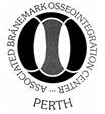Dentures or Bridges
Dentures or Bridges
If you are missing one or more teeth there are a number of replacement options available. However, depending on your individual situation not all options may be applicable or appropriate for your needs.
Removable Prosthodontics/ Dentures
Partial Dentures
If you are missing one or multiple teeth, a partial denture may be an option. There are two types of partial denture; acrylic or cast metal framework. Partial dentures however, do have their drawbacks. Although a good aesthetic and functional result can be achieved, the outcome is inferior to a fixed replacement.
Partial dentures are retained in the mouth by the remaining teeth with metal clasps. In some cases, incorporating crowns and precision attachments allows for these clasps to be somewhat hidden. Regular maintenance is required to maintain the fit of partial dentures.
Complete Dentures
If you are missing all of your teeth, complete dentures are a replacement option.
If you have never worn a denture before, there will be a period of adaptation with eating and speaking. As with partial dentures, with careful planning and skillful design a good aesthetic and functional result can be achieved, but there are limitations.
Complete dentures rely on suction for retention, therefore, when there has been resorption of the boney ridge, which will progressively occur when the bone is no longer stimulated through the function of teeth or dental implants, the stability of the dentures declines and the denture will move. Movement of the denture can result in irritation or ulceration of the tissues or dislodgment of the denture. This issue can be dealt with opting for a partially fixed prosthesis or fully fixed prosthesis. As with partial dentures, regular maintenance such as relining of the fitting surface is required.
Partially Fixed Prosthodontics
Overdentures
If you are missing all of you teeth, have complete dentures with poor retention and stability or have a terminal dentition, you may be able to consider a removable implant supported denture, know as an overdenture. For more information regarding implants please click here.
The implants are usually fitted with either ball abutments or with a bar attachment which correspond to precision attachments within the fitting surface of the denture.
Overdentures do provide greater retention, increased stability and the overdenture can still be removed for cleaning. However, it is essentially still a denture, therefore, you can still have slight movement of the overdenture or irritation of the tissues, particularly if you get small particles of food caught underneath the fitting surface.
Fixed Prosthodontics
If you are missing a single tooth or multiple teeth there are two fixed options available, a tooth borne bridge an implant retained crown or bridge.
Tooth Borne Bridge
A tooth borne bridge replaces a missing tooth or teeth by placing one or more crowns onto the teeth on either side of the space which support the false tooth or teeth, known as pontics. (For more information regarding crowns please click here
Bridges are a viable option where the teeth either side of the space are heavily filled or would benefit from crowning. In situations where the teeth either side of the space are healthy or unrestored, preparing the teeth for crowns is usually not recommended as it would prove quite destructive and a free standing implant retained crown or bridge would be the preferred treatment option.
Implant Retained Crown or Bridge
A dental implant is a titanium fixture surgically placed into the jawbone acting as a replacement of the missing tooth root. The dental implant fuses with the jawbone, a process know as osseointegration, it is a fixed and permanent prosthesis used to support a crown or a bridge. The dental implant restoration looks and functions just like natural teeth. (For more information regarding crowns please click here
Dental implants are now considered the standard of care for the replacement of singe, multiple or a full arch of missing teeth.
For more information regarding dental implants and their specific application in dentistry today, please click here

